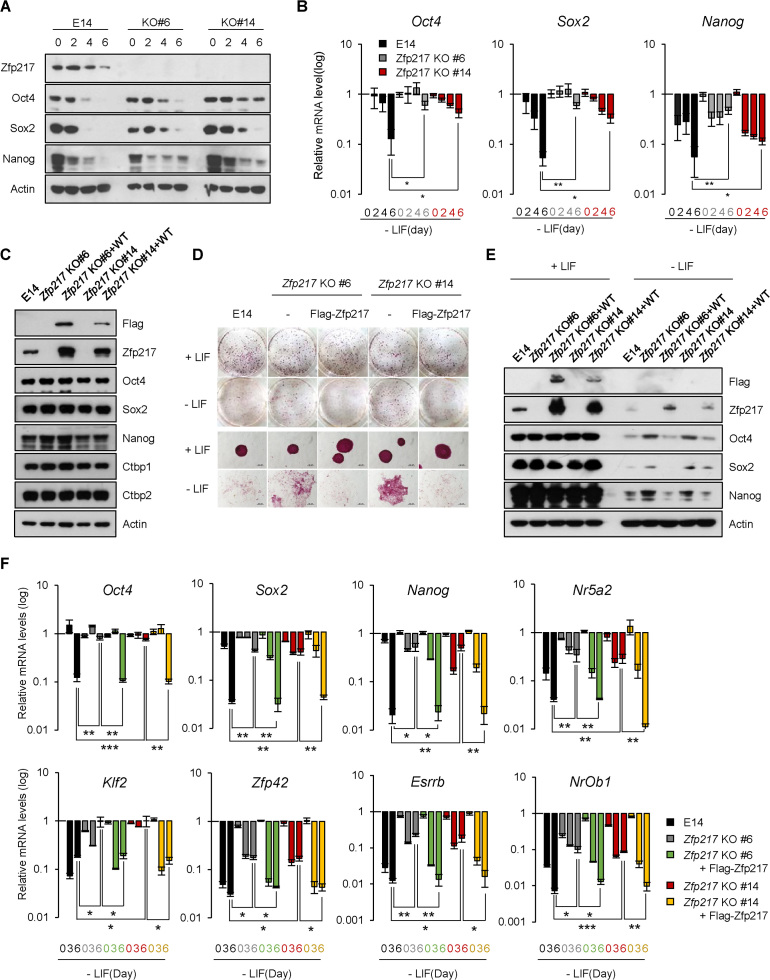Figure 2.
Loss of Zfp217 retards differentiation of embryonic stem cells. (A and B) The protein and mRNA levels of Zfp217 and pluripotency-associated genes in wild-type and Zfp217 KO ESCs (clone #6 and #14) upon LIF withdrawal for indicated days. Expression was detected by indicated antibodies; Actin was used as a control. (n = 3) Presented as means ± SEM (*P ≤ 0.05, **P ≤ 0.01). (C) Zfp217 expression was rescued by Flag-tagged Zfp217 overexpression in Zfp217 KO ESCs (Zfp217-rescued ESCs). Western blot analysis of Zfp217 KO and Zfp217-rescued ESCs, using Flag and Zfp217 antibodies. Expression was detected by indicated antibodies; Actin was used as a control. (D) Self-renewal assay and alkaline phosphatase (AP) staining of Zfp217 KO and Zfp217-rescued ESCs in undifferentiated and differentiated conditions. Knock-out of Zfp217 leads to incomplete exit from pluripotency during ESC differentiation; this phenotype was rescued upon Zfp217 introduction. (E and F) The protein and mRNA levels of Zfp217, and pluripotency-associated genes in wild-type, Zfp217 KO, and Zfp217-rescued ESCs upon LIF withdrawal for indicated days. Expression was detected by indicated antibodies; Actin was used as a control (n = 3) Presented as means ± SEM (* P ≤ 0.05, **P ≤ 0.01, ***P ≤ 0.001)

